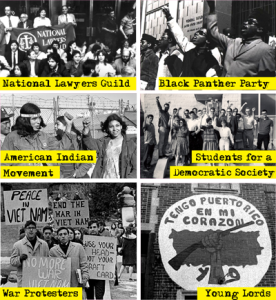
Here's an analysis of the concept of COINTELPRO 2.0, drawing on the provided sources and my own knowledge:
COINTELPRO: The Historical Context
The original COINTELPRO (Counter Intelligence Program) was a series of covert operations conducted by the FBI between 1956 and 1971. The program's aim was to surveil, infiltrate, discredit, and disrupt American political organizations that the FBI perceived as subversive.[1] These targets included civil rights groups, anti-Vietnam War organizers, and Black power movements.[1] The FBI used tactics such as psychological warfare, spreading false information, harassment, and even violence to achieve its goals.[1] The program was eventually exposed, leading to public outrage and legislative limits on the FBI's activities.[1]
According to www.iAsk.Ai - Ask AI:
COINTELPRO's legacy continues to be relevant today, as concerns about government surveillance and the suppression of dissent persist.
COINTELPRO 2.0: Contemporary Manifestations
The term "COINTELPRO 2.0" is used to describe contemporary activities that resemble the tactics and goals of the original program, but operate in a different context. These activities often involve a combination of state and non-state actors, utilizing digital technologies and new legal frameworks.[2]
Key Characteristics of COINTELPRO 2.0:
- Privatization and Digitization: Counterinsurgency is no longer solely the domain of state intelligence agencies. It has been privatized and digitized, with private actors, NGOs, and data-harvesting platforms organizing in concert with universities and police departments.[2]
- Public-Private Coordination: Repression develops through public-private coordination, open-source surveillance, and layers of plausible deniability.[2]
- Focus on Discrediting and Disrupting: The goal remains to discredit and disrupt movements, often by sowing distrust, generating internal divisions, and isolating so-called "radicals."[2]
- Use of Digital Platforms: Social media platforms are used to censor content, monitor communications, and spread disinformation.[2]
- Targeting of International Solidarity: Movements that express solidarity with international struggles, particularly those critical of U.S. foreign policy, are often targeted.[2]
- Framing Dissent as a Threat: Dissent is often framed as a threat to national security, using accusations of foreign influence or terrorism to justify surveillance and repression.[2]
Examples of COINTELPRO 2.0 Activities:
- Project Esther: An initiative launched by the Heritage Foundation that frames pro-Palestinian advocacy as "terrorism" and seeks to dismantle the broader left by branding critics of Zionism as threats to national security.[2]
- Surveillance of Black Lives Matter: The FBI has been accused of surveilling the Black Lives Matter movement, using tactics reminiscent of COINTELPRO.[3]
- Targeting of Student Activists: Universities have been used as sites of surveillance and repression, with private security firms and administrations working to monitor and discipline pro-Palestinian student groups.[2]
- Disinformation Campaigns: Misinformation campaigns are used to discredit and divide activist groups, often by exploiting existing social divisions and stereotypes.[2]
The Role of Disinformation
Disinformation plays a crucial role in COINTELPRO 2.0. It is used to:
- Shape Public Opinion: Disinformation can be used to create a negative public image of target groups and undermine their legitimacy.[4]
- Sow Discord: False information can be used to create conflicts within and between groups.[4]
- Justify Repression: Disinformation can be used to justify surveillance, harassment, and legal action against activists.[2]
The Historical Context of Disinformation
It's important to understand that disinformation is not a new phenomenon. Historically, state actors and other powerful groups have used false and misleading narratives to achieve their goals.[5] This includes the use of propaganda during the Cold War and the dissemination of racist stereotypes to justify inequality.[5]
The core of COINTELPRO 2.0 lies in the use of similar tactics to the original COINTELPRO, but adapted to the digital age and involving a wider range of actors. The goal remains to suppress dissent and maintain the existing power structures, often by exploiting existing social divisions and framing activism as a threat to national security.
Authoritative Sources
- COINTELPRO. [Wikipedia]↩
- From COINTELPRO to Project Esther: The Evolution of Domestic Counterinsurgency in the U.S. [Mondoweiss]↩
- COINTELPRO Continues As Documents Reveal FBI Surveillance of Black Lives Matter. [Atlanta Black Star]↩
- The FBI Sets Goals for COINTELPRO. [SHEC: Resources for Teachers]↩
- Critical disinformation studies: History, power, and politics. [Harvard Kennedy School (HKS) Misinformation Review]↩


Answer Provided by iAsk.ai – Ask AI.
Sign up for free to save this answer and access it later
Sign up →